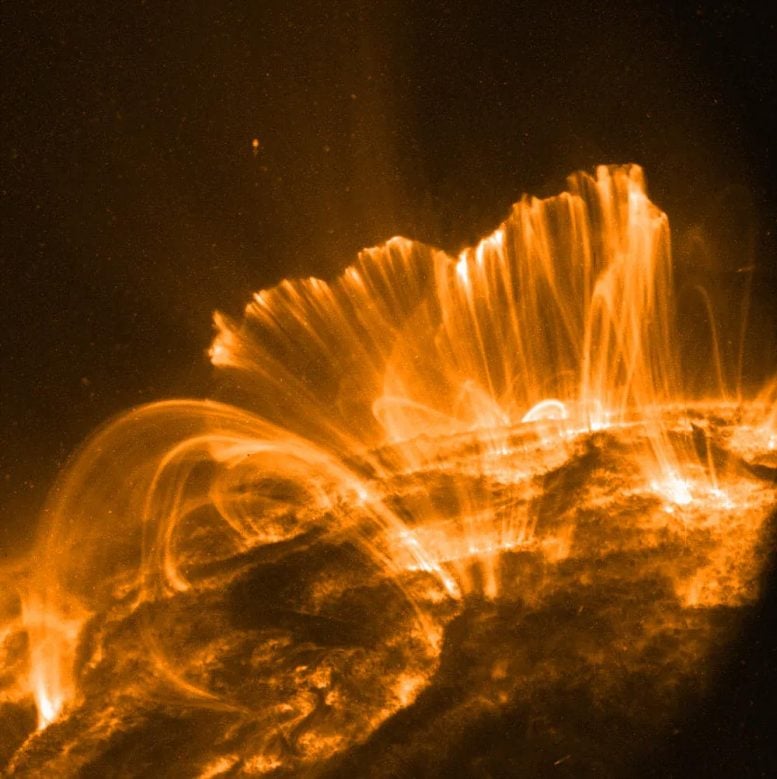
Solar flares – like this one captured by a NASA satellite orbiting the Sun – eject huge amounts of radiation. Credit: NASA
What Are Solar Flares?
Solar flares are large eruptions of electromagnetic radiation from the Sun lasting from minutes to hours. The sudden outburst of electromagnetic energy travels at the speed of light, therefore any effect upon the sunlit side of Earth’s exposed outer atmosphere occurs at the same time the event is observed. The increased level of X-ray and extreme ultraviolet (EUV) radiation results in ionization in the lower layers of the ionosphere on the sunlit side of Earth.
Under normal conditions, high frequency (HF) radio waves are able to support communication over long distances by refraction via the upper layers of the ionosphere. When a strong enough solar flare occurs, ionization is produced in the lower, more dense layers of the ionosphere (the D-layer), and radio waves that interact with electrons in layers lose energy due to the more frequent collisions that occur in the higher density environment of the D-layer. This can cause HF radio signals to become degraded or completely absorbed. This results in a radio blackout – the absence of HF communication, primarily impacting the 3 to 30 MHz band. The D-RAP (D-Region Absorption Prediction) product correlates flare intensity to D-layer absorption strength and spread.
Solar flares usually take place in active regions, which are areas on the Sun marked by the presence of strong magnetic fields; typically associated with sunspot groups. As these magnetic fields evolve, they can reach a point of instability and release energy in a variety of forms. These include electromagnetic radiation, which are observed as solar flares.
Solar flare intensities cover a large range and are classified in terms of peak emission in the 0.1 – 0.8 nm spectral band (soft x-rays) of the NOAA/GOES XRS. The X-ray flux levels start with the “A” level (nominally starting at 10-8 W/m2). The next level, ten times higher, is the “B” level (≥ 10-7 W/m2); followed by “C” flares (10-6 W/m2), “M” flares (10-5 W/m2), and finally “X” flares (10-4 W/m2).
Radio blackouts are classified using a five-level NOAA Space Weather Scale, directly related to the flare’s max peak in soft X-rays reached or expected. SWPC currently forecasts the probability of C, M, and X-class flares and relates it to the probability of an R1-R2, and R3 or greater events as part of our 3-day forecast and forecast discussion products. SWPC also issues an alert when an M5 (R2) flare occurs.
The table below provides the correlation between radio blackouts, solar flares, nominal energy flux (watts per square meter), and the designated severity event descriptor.
| Radio Blackout | X-ray Flare | Flux (W/m2) | Severity Descriptor |
|---|---|---|---|
| R1 | M1 | 0.00001 | Minor |
| R2 | M5 | 0.00005 | Moderate |
| R3 | X1 | 0.0001 | Strong |
| R4 | X10 | 0.001 | Severe |
| R5 | X20 | 0.002 | Extreme |

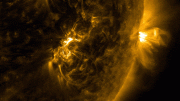
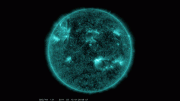
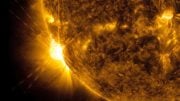
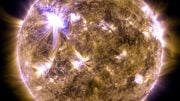
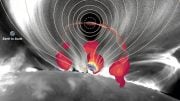
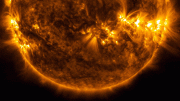


Be the first to comment on "Astronomy & Astrophysics 101: Solar Flares (Radio Blackouts)"